Hengistbury Head: The New Long Groyne 2024
After 85 years of valiant service the old Long Groyne off the end of Hengistbury Head had had it's day. It desperately needed replacement. Due to the vital job this groyne does in defending the coastline in this area, funding was obtained from central government as well as there being money allocated from local councils. In total the work has cost close to £37 million. The new groyne has a design life of 100 years and is capable of functioning with a sea level rise of over one meter. It is a very different beast to the old Long Groyne.
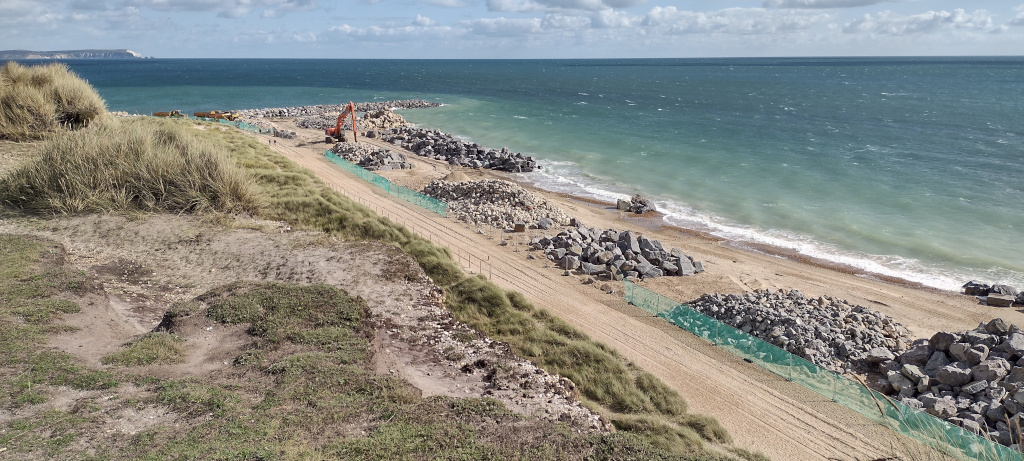
Taken in 2024. The new Long Groyne nears completion but there is still a considerable amount of work left to do
Ever since the sea reached the base of Hengistbury Head several thousand years ago and then continued to rise, the coast has retreated. However due to the unusual accumulation of Ironstone doggers in the sandy structure of Hengistbury Head, and their accumulation on the beach and foreshore over many years, the erosion slowed. This natural defence was severely compromised in the 1850's by the Hengistbury Mining Company. They removed the Iron Stone Doggers and used them to ballast unladen coal barges. Finally the Ironstone Doggers ended up in South Wales and were used as an ore in the iron and Steel making industry.
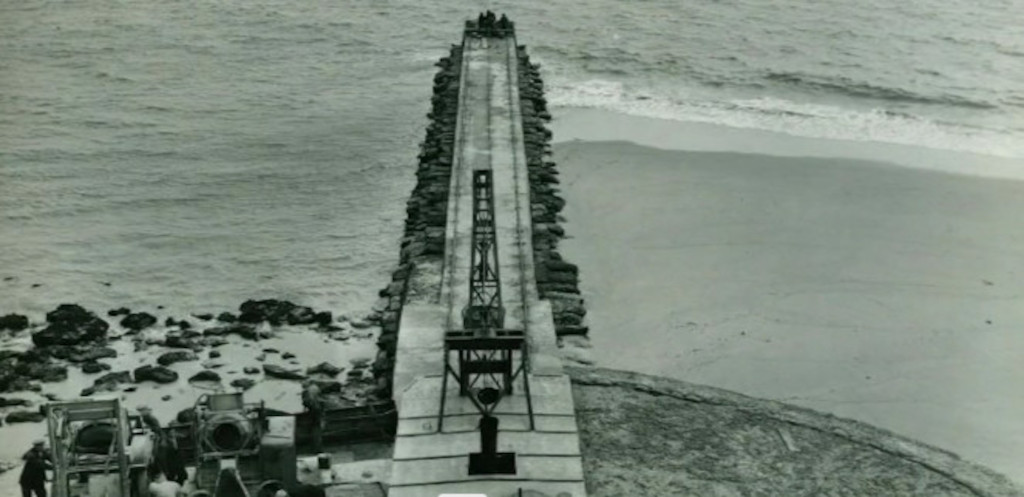
Taken in 1939. The original Long Groyne nears completion. This structure has now been completely replaced.
Bereft of its natural defence, erosion at Hengistbury Head rapidly increased. To combat this erosion a long groyne was built off the end of Hengistbury Head in 1937-9. This captured the eroded beach material and so (quite successfully) slowed the erosion from Longshore drift. But over nearly 90 years the old Long Groyne took a considerable battering and became less and less effective. That is why a replacement was needed.
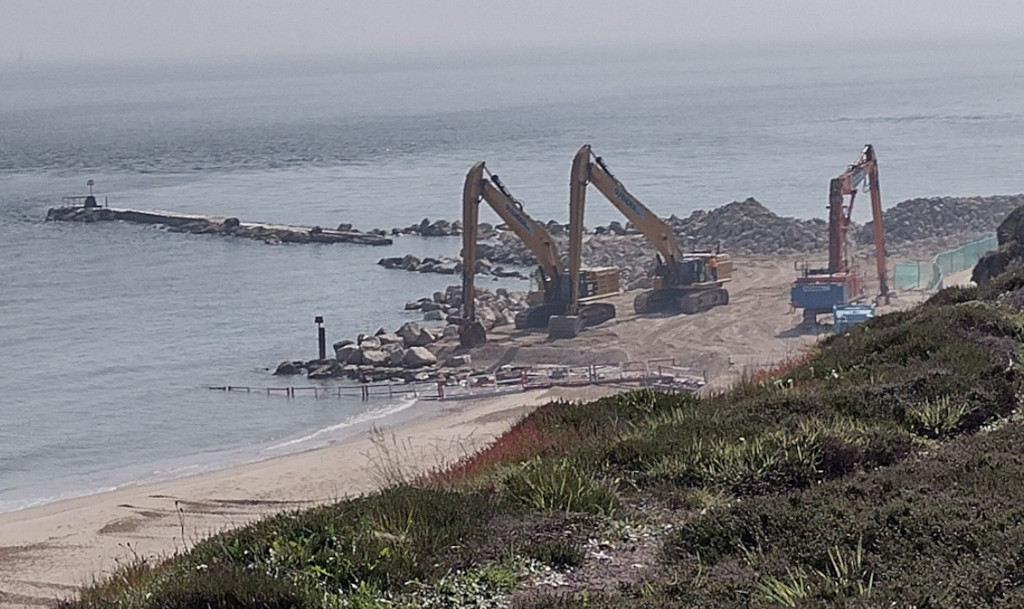
The old Long Groyne was completely dismantled. Some of its rocks/concrete was re-used elsewhere in the new Long Groyne
In April 2024 construction started of a new Long Groyne to directly replace and enhance the original. At time of writing, this work is now nearing completion. The Long Groyne is so positioned to be a stabilising anchor point (known as a terminal groyne) for the two bays that it divides (Bournemouth Bay and Christchurch Bay). The major erosion mechanism here involves the drift of sand from Pool and Bournemouth eastwards and into Christchurch Bay. The Long groyne "captures" some of this sand and also slows new erosion from the beaches. The new Long Groyne is very much an upgrade on the old one as well as a replacement.
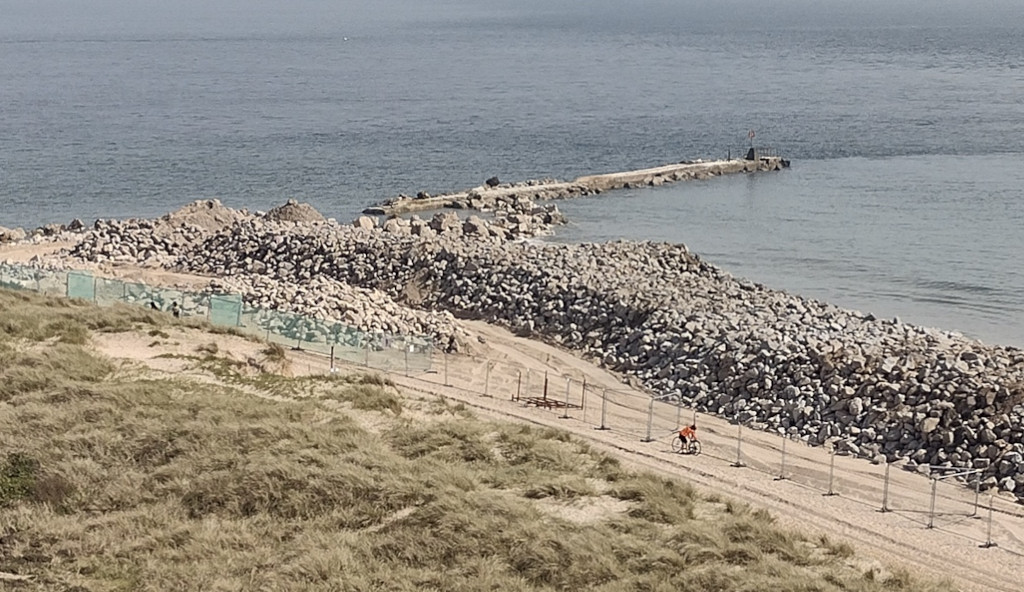
Last days of the Old Long Groyne. The whole structure was finally dismantled. Notice the quantity of rock replacing it.
The original Long Groyne, constructed just before the second world war, was very much a "concrete slab" stetching 150 yards out off the end of Hengistbury Head. While the new groyne will be more-or-less the same length it will be a full 1.5 metres higher and significantly wider. The construction will also be entirely different. It is a rock groyne formed from three layers of (mainly) granite. This rock is imported from France and is rather bizarrely mostly composed of waste rock from the manufacture of granite table tops, even though some of the rocks are in excess of ten tonnes each.The 33,000 tonnes of rock was dropped off by barge at high tide then retrieved at low tide.

33,000 Tonnes of French and Norwegian Granite was dumped on the beach at high tide then reieved at low tide.
Due to its construction form, the new Long Groyne will have no access for people. The old long Groyne used to be a popular fishing location but has now for many years been off limits due to it's dilapidated state. However there has been a considerable effort made to create suitable environmentas for sea creatures. This has included using some of the old rock from the original groyne after carving pools and dips into it. These rocks along with a number of specialized structures, designed specifically to encourage marine wildlife, have been placed along the lee edge of the groyne
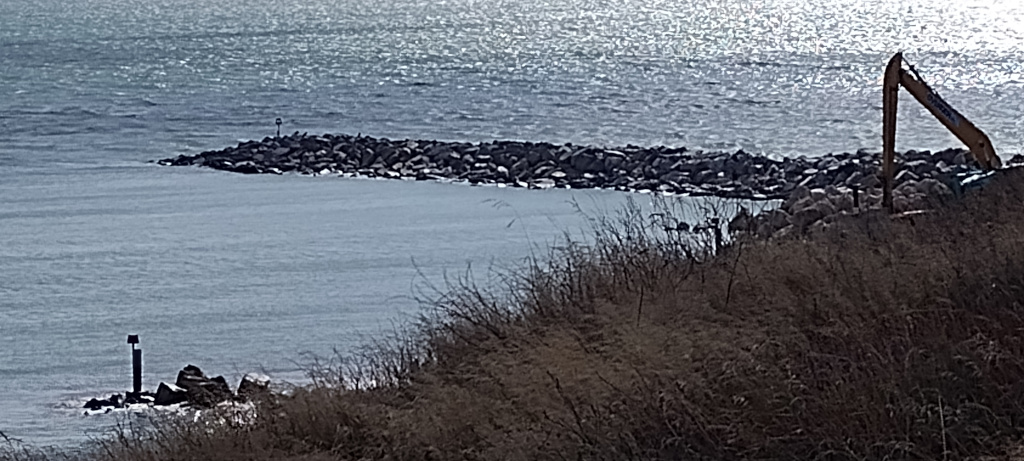
Early October 2024. The new Long groyne at Hengistbury Head nears completion